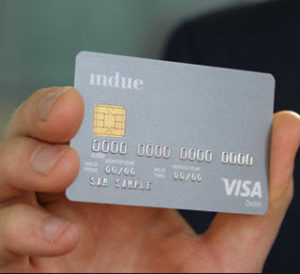There are essentially two types of Centrelink loans available and multiple options within these two…
How the Centrelink Cashless Debit Card Works
 The Australian government has been testing an alternative to how Centrelink cash benefits have been provided in hopes of assisting low-income individuals while lessening the impact of drug and alcohol abuse in vulnerable communities. Their answer has been a trial of the new Cashless Debit Card system, a program that is being expanded to new locations throughout the country.
The Australian government has been testing an alternative to how Centrelink cash benefits have been provided in hopes of assisting low-income individuals while lessening the impact of drug and alcohol abuse in vulnerable communities. Their answer has been a trial of the new Cashless Debit Card system, a program that is being expanded to new locations throughout the country.
But many people receiving Centrelink benefits aren’t fully aware of how this new process works. To help you understand the program, here is an overview of the Centrelink Cashless Debit Card program.
How You Use the Centrelink Cashless Debit Card
Each of the cards issued as part of this Centrelink program looks and operates like a traditional bank card, minus a few exceptions. First, it cannot be used to purchase alcohol or gambling-related products. Second, funds cannot be withdrawn as cash.
Otherwise, the Centrelink Cashless Debit Card can be used at many store locations or online shops that accept normal debit cards as a method of payment. You can purchase a variety of products and services using the card, and can even pay bills with the card through this Centrelink program.
The process of using the card is highly similar to a traditional debit-based purchase, allowing benefit holders to buy items without being easily identified as a Centrelink payment recipient.
How Are Centrelink Payments Affected?
People who receive income support payments in the trial areas won’t see any change in the amount of money provided. The only differences are how the funds are provided and where they can be spent.
80 per cent of the Centrelink payment will be associated with the Cashless Debit Card. These funds can only be used for approved purchase types and at authorised stores. For example, any buying activity related to gambling or purchases made at gambling-oriented establishments are blocked, but shopping at traditional grocery stores is permitted.
The remaining 20 per cent is paid into the recipient’s bank account, ensuring benefits recipients have access to cash when the need arises. These funds can be spent in the same manner as deposits from previous payments.
Who Must Use the Centrelink Cashless Debit Card?
Right now, the program is still in the trial phases, with Ceduna Region and East Kimberley residents. All individuals who receive working age incoming support payments in those areas must use the Centrelink Cashless Debit Card to receive their benefits.
Other people living in those areas may also use the system if they choose. Individuals receiving the aged pension, veteran’s payments, or wage earners can volunteer for the program. Aged pensioners who wish to volunteer must contact their local Centrelink Office while Veterans and wage earners can communicate with the card provider directly either by phone or online.
Two additional locations are being considered as part of the expanded trial, and more areas may also be added over time. So, if you don’t live in the Ceduna Region or East Kimberley, it may only be a matter of time before the Centrelink Cashless Debit Card is available to you.
This is a general article on the Centrelink Cashless Debit Card for site readers. This is not a sponsored or promoted post.



The genesis of the Indue Card is a fundraising enterprise for the Liberal Party.
The Initial company was set up by National Party and Liberal Party Identitees to facilitate the fundraising for the Liberal Party.
Lately the Indue Card has been sold to overseas Corporations, some which are involved with Gambling,
The Indue Card does not operate as a debit card, especially bringing services that a debit card from Australian Banking providers can give the debit card holder, for example, you cannot BPay, you can also not set up payments for a variety of “normal” uses., like monthly amounts for vehicle insurance, or any other monthly payments.
So you can also request not to be forced onto this fraud card, but that information is not available from Centrelink. That info comes from community legal groups set up to inform those affected by the LNP fundraising fraud card.